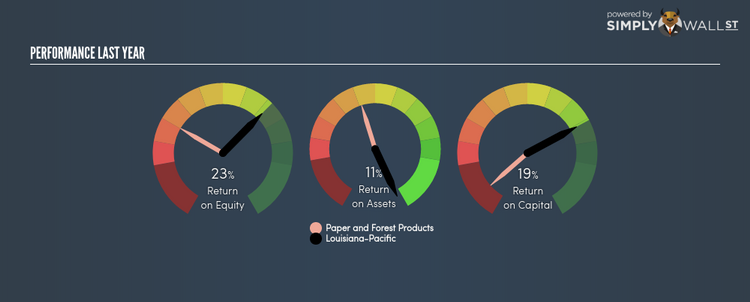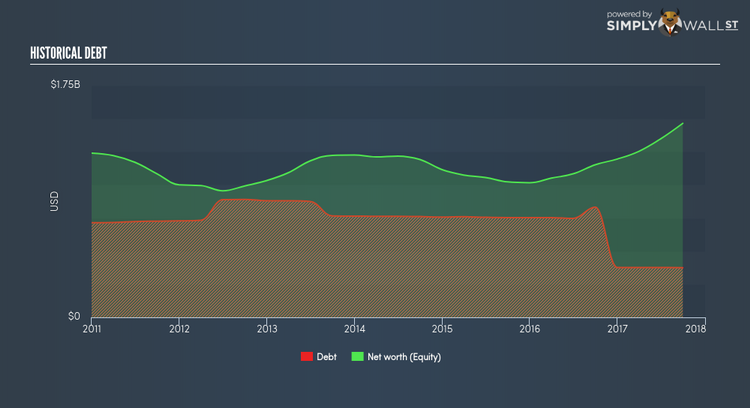With An ROE Of 23.15%, Has Louisiana-Pacific Corporation’s (LPX) Management Done A Good Job?

With an ROE of 23.15%, Louisiana-Pacific Corporation (NYSE:LPX) outpaced its own industry which delivered a less exciting 6.44% over the past year. Superficially, this looks great since we know that LPX has generated big profits with little equity capital; however, ROE doesn’t tell us how much LPX has borrowed in debt. We’ll take a closer look today at factors like financial leverage to determine whether LPX’s ROE is actually sustainable. View our latest analysis for Louisiana-Pacific
Peeling the layers of ROE – trisecting a company’s profitability
Firstly, Return on Equity, or ROE, is simply the percentage of last years’ earning against the book value of shareholders’ equity. For example, if LPX invests $1 in the form of equity, it will generate $0.23 in earnings from this. In most cases, a higher ROE is preferred; however, there are many other factors we must consider prior to making any investment decisions.
Return on Equity = Net Profit ÷ Shareholders Equity
ROE is measured against cost of equity in order to determine the efficiency of LPX’s equity capital deployed. Its cost of equity is 12.19%. Given a positive discrepancy of 10.95% between return and cost, this indicates that LPX pays less for its capital than what it generates in return, which is a sign of capital efficiency. ROE can be dissected into three distinct ratios: net profit margin, asset turnover, and financial leverage. This is called the Dupont Formula:
Dupont Formula
ROE = profit margin × asset turnover × financial leverage
ROE = (annual net profit ÷ sales) × (sales ÷ assets) × (assets ÷ shareholders’ equity)
ROE = annual net profit ÷ shareholders’ equity
The first component is profit margin, which measures how much of sales is retained after the company pays for all its expenses. The other component, asset turnover, illustrates how much revenue LPX can make from its asset base. The most interesting ratio, and reflective of sustainability of its ROE, is financial leverage. Since ROE can be artificially increased through excessive borrowing, we should check LPX’s historic debt-to-equity ratio. The debt-to-equity ratio currently stands at a low 25.63%, meaning the above-average ROE is due to its capacity to produce profit growth without a huge debt burden.
What this means for you:
Are you a shareholder? LPX exhibits a strong ROE against its peers, as well as sufficient returns to cover its cost of equity. Since its high ROE is not likely driven by high debt, it might be a good time to top up on your current holdings if your fundamental research reaffirms this analysis. If you’re looking for new ideas for high-returning stocks, you should take a look at our free platform to see the list of stocks with Return on Equity over 20%.
Are you a potential investor? If you are considering investing in LPX, basing your decision on ROE alone is certainly not sufficient. I recommend you do additional fundamental analysis by looking through our most recent infographic report on Louisiana-Pacific to help you make a more informed investment decision.
To help readers see pass the short term volatility of the financial market, we aim to bring you a long-term focused research analysis purely driven by fundamental data. Note that our analysis does not factor in the latest price sensitive company announcements.
The author is an independent contributor and at the time of publication had no position in the stocks mentioned.


